IPA Clone Series: Firestone Walker Double Jack
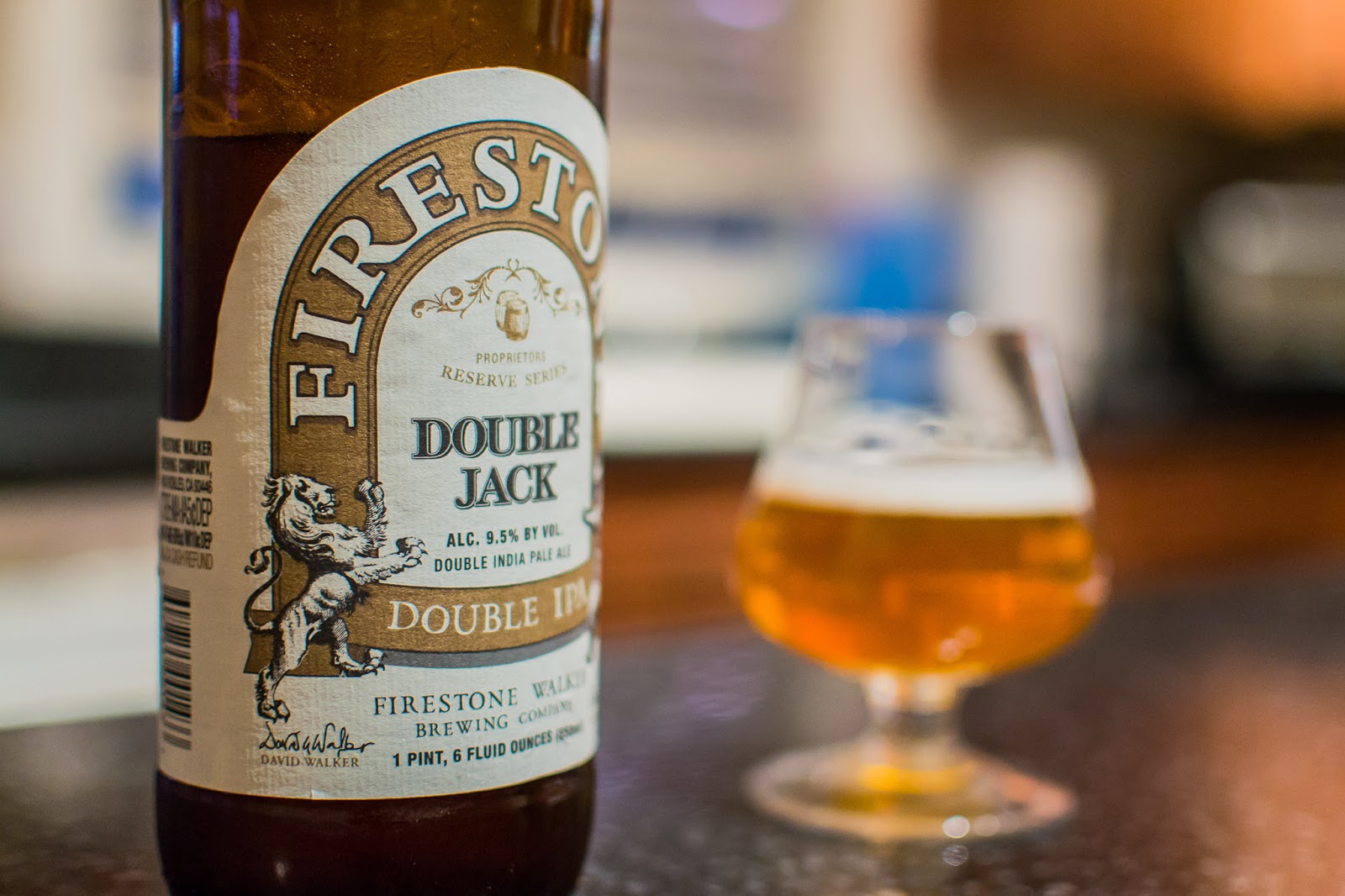
Oh Double Jack… I love this beer. I feel it’s one of the best beers in the country, and happily defend that statement. =) Seriously though, when I decided to clone some of the best IPAs, Double Jack was one of the first to come to mind. Not much warms my heart more than ripping the foil off of a DJ bomber, popping the cap, and catching a whiff of what’s inside. There’s a good reason Firestone Walker manages to win brewery of the year about 50% of the time.
Formulating a clone for this beer was interesting. It’s nearly the same recipe as Union Jack, but there are a few quirks. Between Firestone Walker’s website, a couple interviews with Matt Brynildson, and the Can You Brew It show for Union Jack, all the info is out there. So let’s get to it: The bottle states it’s 9.5% ABV, but Matt has said a couple of times this beer is actually close to 10%, so I targeted 9.5 to 9.8%. I degassed a sample of Double Jack, and the gravity reads 1.014, which puts the OG is around 1.087 to 1.089. Matt also states they use the exact same grain bill as Union Jack, they simply stop the sparge early, collecting less wort at a higher gravity. I don’t want a 4 gallon batch, so I increased the grain bill while keeping the ratios of malts the same. The kettle hops are mostly the same, but Matt does state they were shooting for a true 100IBU beer. Then in the dry hop, they add four additions over the course of a couple weeks. This beer uses close to 5lbs/bbl of hops, which equates to just shy of 16oz in a 6 gallon batch. Union Jack is 83% Centennial/Cascade in the dry hop, and 17% Amarillo/Simcoe. I get a little more Amarillo and Simcoe in Double Jack, so I went with a 73/27 split rather than 83/17.
I was a little hesitant to use WLP002 for this beer, as 002 isn’t the most attenuative yeast, and Double Jack is a fairly dry beer. The CYBI folks used WLP002 for their Firestone Walker clones, and they said it was a dead-on match for the FW house yeast. Tasty apparently didn’t have a problem getting his UJ clone to attenuate, and a number of folks on HBT had success with their UJ clones hitting FG. So, I put my reservations aside, and gave 002 a try. The one inconsistency I noticed was the Firestone Walker website didn’t list Carapils under the malts that are in DJ, but they do list it for UJ. FW tends to be fairly consistent at updating their recipes on their website, so I decided to take the Carapils out.
I have no idea why, but this batch has been pushed back half a dozen times over the past few months. It was the batch I just never got around to brewing. I took a week off of work to pack and move, but on Thursday, I took a break from packing and brewed some beer. There wasn’t anything too special about the brew day. The temperature outside has been bloody perfect lately (82*), so it was a lovely day to brew. I didn’t measure either the strike or sparge correctly, as I was about 1/4 gallon low going into the kettle. Combine that with 10oz of hops in the boil, and I only collected around 5gal of wort post boil.
Brewed: 10-25-12
Dry Hopped: 10-29-12
Kegged: 11-10-12
OG:1.083
FG:1.011
ABV: 9.5%
IBU: ~100
6 gallons
17.75lbs 2-Row
2.5lbs Munich
5oz Simpsons Caramalt
Mash @ 145 for 60 min then 155F for 10 min
2oz Warrior @ 90
1oz ea Centennial/Cascade/Chinook @ 30
2.5oz ea Centennial/Cascade @ 0
WLP002 – English Ale Yeast – 1 gallon starter
Dry Hop 1: .5oz ea Centennial/Cascade
Dry Hop 2: .5oz ea Centennial/Cascade/Amarillo/Simcoe
Dry Hop 3: .5oz ea Centennial/Cascade
Dry Hop 4: .5oz ea Centennial/Cascade .25oz ea Amarillo/Simcoe
3-4 days per addition
This beer fermented out very quick, even at 63F. By the third day it was down to 1.020, and by the fourth, I added the first dry hop addition directly to the primary. Three days later I racked the beer to secondary, to get the beer off the yeast cake, as well as to remove the first round of dry hops. Each hop addition was added 3 days after the last, although I didn’t rack the beer after each addition, only the first. With this beer I took care to keep the wort away from oxygen. I purged my secondary with co2, and purged the keg before filling. I usually don’t go to the trouble, but with this much hop oil in solution, it’s worth the effort.
Turns out my concerns with WLP002 attenuating were unfounded, as it ripped right though this beer. Both my OG and FG were a few points low, which isn’t a big deal. I’m wondering if the real Double Jack possibly has carapils in the recipe though, as it finishes at 1.014 or so. My beer has a little less body, but it isn’t noticeable until the beers are side-by-side. I don’t have enough experience with WLP002 to tell where the recipe merely needs a little carapils, or if it was a variance of mash temperature — Very slight difference though. With that said, let’s get to how it tastes!
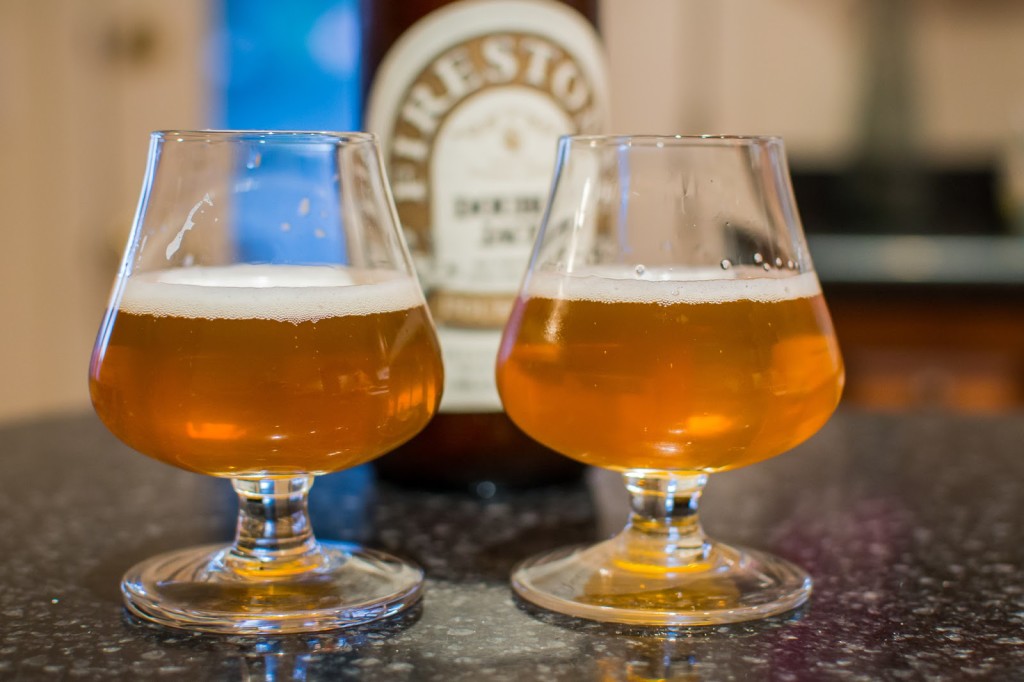 Results:
Results:
Short version: It’s cloned. If you’ve had Double Jack, you know how this tastes.
Long version: Visually, it’s almost perfect. The color is nearly spot on, and both have a long-lasting white head. Both beers are slightly hazy. Theirs’ was a couple weeks old, I don’t filter, so we’ll call it even. The aroma jumps from the glass, mostly sweet citrus, a little pine, and lots of fruity aromas. It’s not heavily tropical, but the esters from the yeast meld right in with the hops. It’s tough to tell where the esters stop and the dry hop begins. This is without a doubt one of the best hop aromas I’ve created; it’s right up there with my Pliny the Younger clone. The beer tastes mostly like it smells: there’s a solid malt character, lots of hop flavor, some boozy alcohol, and a firm bitterness that reminds you this is a Double IPA.
There are two slight differences that keep these beers from being absolutely indistinguishable. One is the real DJ has a touch more body than mine. It’s a very slight difference, but I’d be lying if I said it wasn’t there. Until the beers are side-by-side, you can’t tell, but drinking them at the same time, it can be picked out. 1.014-1.015 is where the beer needed to finish; what needs to be done to the recipe to get there, I’m not 100% sure. The second difference is that my beer is slightly cleaner than the real DJ. I underestimated the ester contribution that WLP002 provides. If I had to do this all over again, I would have fermented it around 65-67F. Keep in mind these differences are extremely small.
All in all, this is Double Jack, and I’m confident calling it cloned. If I were to brew it again, I’d probably add about 8oz carapils to the grist in effort to get the FG around 1.014 or so. This beer is a pain to brew in the sense of how much work goes into it, but it’s not that hard to ‘pull off”. If you’re careful to avoid oxidation, and ferment with healthy yeast, you’ll get damn close.
I’ll admit, it’s pretty awesome having a keg of Double Jack on tap, be it the clone, or the real thing. I’d definitely recommend brewing this. It’s one of the best beers I’ve ever made.
**UPDATE**
This clone recipe took 1st place for IPAs and 3rd place BOS in a competition this weekend! It scored a 45, which is my highest score in a competition to date. I’m eagerly awaiting the scoresheets, as I’m curious what the judges thought. Not bad for a competition with nearly 400 entries.
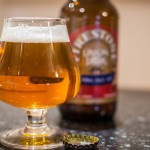
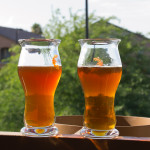
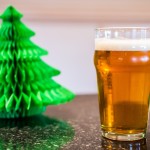
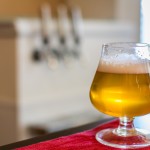
That looks delicious! I appreciated the thorough research you put into – As you said, the info is out there, but it is still time consuming to compile it! Any more info on how you purged your secondary with CO2? I rarely secondary, but if I was doing this beer I would consider. Guess you could use a keg for secondary to purge.
Thanks! I have MFL fittings on my ball lock fittings, so I shut off the CO2, unthreaded the gas fitting, stuck the hose about 2/3rds the way into the better bottle, and let the gas flow for about 30 seconds. A keg as a secondary also would work great.
Thanks for the recipe. I was able to try this last August when I was out in California and LOVED it!
I've never had a Firestone Walker before but that recipe looks delish.
What's the impact of raising the mash temp 10F (going from 145 to 155) for 10 min?
Good question. The short answer is, that's their mash schedule, so I followed it.
Long answer, 145* really favors beta-amylase. It works slower, and a long rest at that temp helps ensure a very fermentable wort. Mashing that low will still leave a little starch behind though. 155* is right in alpha-amylase's sweet spot, and alpha-amylase works much faster than beta does. 10 minutes there ensures you have a fully converted, highly fermentable wort.
If you do a single infusion, just rest at like 147-148 for at least 60 mintues (75-90 might be better).
how long did you whirlpool for on this one?
20 Minutes. I think Firestore whirlpools for 30-40, but I figured after 20 minutes, diminishing returns had well set it.
Im thinking about brewing this but I think it sounds crazy that the yeast would attenuate that good. But if it works it works I guess. Like you write in your article. I have to put my reservations aside.
Did you get any interesting feedback on the scoresheets? I'm not going to get to it for a bit, but debating between brewing this or your PTY clone sometime this spring – which did you prefer? I'm leaning towards DJ.
The one scoresheet sucked. The comments were like: Aroma: Hoppy, slighly malty, smells good. Taste: kind of malty, very hoppy. Score: 44. I read it, and thought really?
The second scoresheet rocked. I actually emailed the judge just to thank him for such detailed notes. He wrote an entire paragraph in each section. His tasting notes pretty much echoed my own. Huge citrus hop aroma with some floral qualities, no grassiness. Big malty backbone without any sort of cloying character. He loved the beer. His overall impression was: "Wow. Just wow. Jealous."
Tough call on which one I preferred. They're definitely different beers. Double Jack has more of a clean, bright citrus aroma with some floral qualities. PTY is big pine, grapefruit, and stone fruit. If you like beers with Simcoe/Amarillo, you'll love the PTY clone.
I actually just brewed Union Jack on Monday, so we'll see how it turns out.
If you brew it, use less Crystal. I'm not saying Vinnie lied to me, but I really don't think PTY has 4% C40 in it. 2% tops, if at all.
I hate that – I've had some bad scoresheets, but one was with my APA and it basically described the beer well and didn't find any flaws, he scored it a 39 and had no input as to what would make the beer better, more to style, score higher, etc.
Anyway though, I'll probably brew them both eventually, but will probably just decide which to brew first based on what yeast/hops I have at the time. Not sure when I'll get around to it though. Thanks for the feedback.
Ya, about 2/3rd the scoresheets I get are good, 1/3rd are crap. The guy basically just described an IPA. It could have been a 27pt beer or a 45pt beer, you'd have no idea. His comments for overall impression were: "Nice effort".
The good generally out weigh the bad though. Judging is a tough job, so I try to cut people slack where I can.
Yea, it is what it is. I shouldn't really talk since I don't think I could ever be a judge. I'm too picky and I don't think I have that great of a palate nor am I particularly good at describing flavors – just know what I like.
Made this recipe a couple weeks ago. Just kegged it yesterday. I took a little sample and it is extremely grassy. All the dry hopping was done for 3 days each round @ 70 degrees. The 1st was done when fermentation was almost done. Transferred to secondary and did the other three for 3 days each. Does the grassy taste go away?
Yikes. To be honest, I've never experienced grassy flavors from dry hopping. Dry hop flavor and aroma fades very quickly, so I'd imagine it'll go away quick.
Nice Blog, enjoy reading your entries. This beer is fantastic, one of my favorites as well. If you did this again, would you use Hop extract for the next time around? It sounded like you enjoyed using it for your PTY clone.
I too enjoy reading your blog. I want to brew this beer and would like your opinion on something. My LHBS doesn't have Simpson's Caramalt. Do you think it would make any difference if I used 5 oz of crystal 40 instead? Or maybe use .25 oz of crystal 20 and .25 oz of crystal 40 to get closer to the 30-37 L range of caramalt? Thanks for your input.
Scott
Use Carastan(35L) if they have that (it's almost the same malt), or ya, C40 would work fine also.
It's such a small amount of crystal malt, that I don't think the differences would come through in this beer.
Actually ya, I wouldn't see a reason not to. 15ml Hop extract would replace the 90 minute addition pretty well.
Aside from hop extract, I'm also becoming a fan of the super high alpha hops (Apollo, Bravo, etc). I've got some Apollo that's 19% AA, so it works well for big IPAs where I want a ton of alpha acids, but less green matter in the kettle.
I'm working on an adaptation of this recipe with a different hop schedule and some malt bill tweaks. I'm holding at 11% abv right now.
Interestingly enough, I had a temperature controller fail on one of my freezers; when I got up Sunday morning, my keg was at 27dF (instead of 66F like the controller was programmed to hold). I pulled it out, brought it up to 67F and replaced the temperature controller.
When I swapped dry hop packages, I took a sample. I was *stunned* at how clear the beer pulled. While I have no clue what the long term sensory impact will be (I added one day onto the dry hop schedule to compensate), it will be interesting to see if this short *really* cold crash will improve the clarity.
Ya, 002 drops like a flipping rock once the temperature drops. Hopefully it turns out well!
Very good your site, I am very busy with your beers I might indicate that maturation time of need is beer? I know that many IPA styles taken young, but I also know that the Firestone people enough time left to rest their beers.
A greetings from Argentina
Great analysis and write-up. Do you think the four dry hop additions helped? Each dry hop is 1 to 2 oz., so it seems like they could be combined into just two additions. I have young kids at home, so every bit of time saved helps. That said, I'll make time if the extra work is worth it.
I tend to prefer my IPAs very young. Possibly that's just my tastes. As for my non-hoppy beers, yes, they get better with time.
I doubt it. I agree, you could very likely acheive the same effect if you combined the four additions into two. Dry hopping is still something that brewers really don't understand all that well, but I'm find there's quite a bit of leeway.
good stuff, man. I dig your blog. I'm trying to go pro from home… we'll see. I like your analysis. I have a degree in biology & chemistry and a doctorate in whatever….. the main thing is knowing the tricks and techniques to produce a product. keep up the good work, it's inspired me to start a blog. shoot me an email and i'll turn you on to my blog. know you're as busy as me, prolly, so take care and good luck, good stuff, good work.
ya, drop me a link: bertusbrewery@gmail.com
I tapped this last week. Unfortunately, the first round of dry hops was in a sack without weights and it floated on the beer. That makes it tough to draw a conclusion on whether two additions works as well as four. We compared the homebrew to a two month old bottle of Double Jack, and the homebrew definitely had more aroma. I'd expect that putting a fresh beer up against a two month old one, though. I'll just have to brew it again without the dry hopping failure.
On the whole, though, it's a great beer. We went through three growlers at a neighbor's house on Saturday, which qualifies it as a success given that most of the neighbors drink Bud Light.
Not trying to leave comments as "unknown" and be rude, I just don't have the comments system figured out. Apologies. Tony.
What efficiency does that work out to? DJ is my favorite beer, and I'm finally feeling confident enough in my mash abilities to attempt this clone. My efficiency can sometimes suffer, so I may need to scale the recipe a bit to compensate…
I think like 74%. My recipe efficiencies vary on the blog, as I post the exact recipes I brew. I get around 82% on lower gravity beers. 1.035-1.055. Once I get over 1.060 i start to dip towards the 76-78% range, and once I'm over 1.075 or so, it's 72-75%.
So that gives you an idea what I'm working with, and how it might translate to your system.
No worries =).
Sounds like it turned out fairly well still. Were you using pellets or leaf?
Have you brewed this again since? Anything you'd change?
It's on my short list, but no, I haven't brewed it since. I'll probably see how this recipe fairs with WLP090 later this fall, as I'm trying to use it for every beer I can these days.
Should I be concerned that beersmith is calculating this recipe to be around 160 IBU's? I use the tinseth setting
No, not at all. IBU calculators are pretty much useless for most west coast IPA recipes.
Did you pull each dry hop addition before the next?
I added the first in the primary, so it effectively was removed when I racked to secondary. I didn't pull the others out though.
Hey Scott, I like your site, I made the Double Jack off of your recipe. What's your water profile for this beer?
Thanks
Dan
RO water, and I add a little Calcium Chloride and Gypsum back
Brewed this up today, it's currently whirlpooling. I expect it to turn out very well. Thanks for the recipe! The clerk at my LHBS screwed up and only gave me 2 oz of cascade instead of 4 (buying the dry hops later), so I compensated by adding 1 oz of centennial/chinook around the 35 minute mark and I bumped up the 2.5 oz of cascade at flameout to 3. I'm anticipating a minor difference. Another question: What do you recommend for the dry hop if you don't have the option to keg and purge with CO2? My last APA I made I had a 2 stage dry hop, and racked it to the secondary for the second dry hop. Result: Oxidized. Badly. I'm worried about this beer and want to keep it in the primary only. Options are to add all dry hops at once for about 8-10 days or split it in two but keep it in the primary, without racking to secondary. Thoughts?
Thanks,
Adam
I ended up just doing a 2 stage dry hop. 2 oz on day 4. 4 oz on day 8. Bottled today on day 12. SG was 1.082, FG was 1.016 so right at 8.8%, which I am happy with. Didn't taste oxidized in the least, and tastes pretty much spot on to how I remember DJ tasting. So excited for this to be ready! I pitched 2 packs of 04, so I had a huge yeast cake, in addition to the 6 oz dry hop, so I ended up with a little under 4 gallons. This always happens when I make hop bombs so I need to compensate more when calculating my water volumes. Anyways, thanks for the recipe. I think it'll be my best IPA to date!
That's awesome! And ya, a massive dry hop like this really sucks up a lot of wort